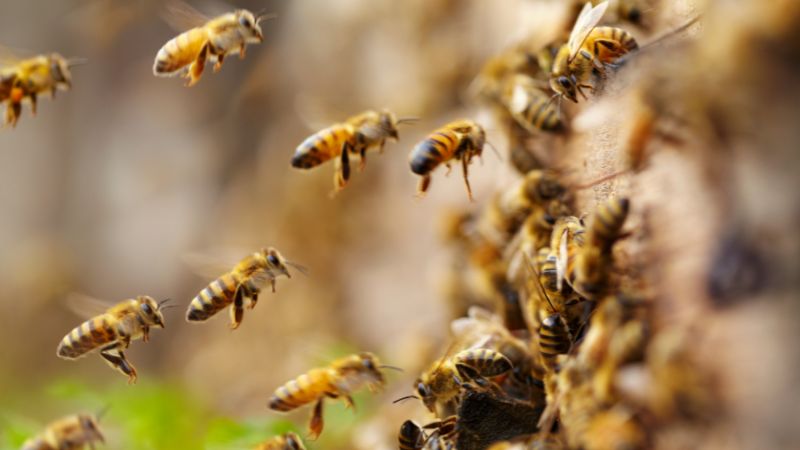Scientists Stick QR Codes on Bees to Track Their Flight Patterns

Entomologists and engineers at Pennsylvania State University have embarked on a unique experiment by affixing QR codes to honey bees.
This study aims to uncover the true distance that these bees travel from their hives to gather food.
Conducted in the rural landscapes of Pennsylvania and New York, this project has already started to provide intriguing insights into the behaviors of these essential pollinators.
Margarita López-Uribe, a co-author of the study and a Penn State entomologist, shared that previous research suggested bees could forage up to 6.2 miles from their home.
However, this new method using what the team calls ‘fiduciary tags’ may prove those estimates inaccurate.
The tiny QR codes act like employee badges, tracking each bee’s movements in and out of the hive with an automatic imaging system.
The system records not just the bee’s ID but also the date, time, temperature, and whether it’s coming or going.
This data is crucial for López-Uribe and her team, as it allows a more precise measurement of foraging distances. Traditional methods of studying bee behavior could never provide such detailed tracking.
Robyn Underwood, another Penn State researcher involved in the study, explains that they specifically targeted younger bees for tagging.
These bees are less likely to sting and easier to manage, which provides more accurate age tracking—critical for understanding when bees start and stop flying.
Their findings have been eye-opening. Most bees were observed making brief trips, likely for quick checks or short tasks.
However, about 34% of the tagged bees were gone for over two hours, indicating longer foraging trips, especially during times when flowers are scarce.
Additionally, this study has provided surprising data on bee lifespans. “Contrary to the previously thought 28-day lifespan, we’re seeing bees that are active foragers up to six weeks old,” Underwood added.
This longevity, combined with their later start in foraging life, suggests that bees live longer than previously estimated.
The researchers are now collaborating with Virginia Tech to pair this foraging data with observed ‘waggle dances’—the unique way bees communicate about food locations, hoping to further decode the mysteries of bee foraging behaviors.
